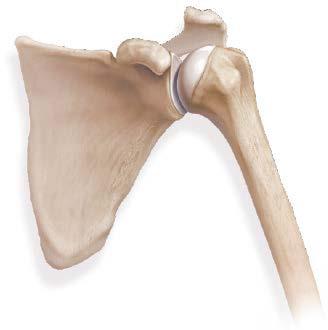
1 minute read
Total Shoulder Replacement Overview
Definition
The shoulder is made up of three bones: the upper arm bone (humerus), the shoulder blade (scapula) and the collarbone (clavicle). It is a ball-and-socket joint that allows for a wide range of motion. The head of the upper arm bone (humerus) is the ball, and the circular depression (glenoid) in the shoulder blade (scapula) is the socket. The head of the humerus and the surface of the glenoid are coated with a smooth, durable covering called cartilage that protects the bones and enables them to move easily. The rotator cuff is the collective set of muscles and tendons that provide stability, support and function to the shoulder.
Advertisement
Total Joint Replacement
Conditions such as arthritis, as well as certain diseases, can affect the shoulder joint structure and function. The word “arthritis” means inflammation of the joint. Over time, this inflammation can cause cartilage loss and exposed bone within the shoulder joint, leading to pain and limited mobility. Advanced arthritis is the most common reason for shoulder replacement surgery. Shoulder replacement surgery is performed when the shoulder joint reaches the point when pain can no longer be controlled with non-operative treatments. Total shoulder replacement is a surgery that removes the damaged joint surfaces and replaces them with artificial implants. Shoulder replacement implants have been designed to provide the best possible function with long-lasting results. Metal, plastic or ceramic materials may be used. Your surgeon will determine the most compatible and durable implant for you.

Types of Shoulder Replacements
1. Total Shoulder Replacement
The total shoulder replacement involves replacing the arthritic joint surface with a metal ball attached to a stem and a polyethylene (hard plastic) socket. This is used for patients that have a functioning rotator cuff.
2. Reverse Total Shoulder Replacement
The reverse shoulder replacement is used for patients without a functioning rotator cuff, inability to lift hand to head, and for those who have had a previous shoulder replacement that has failed. A reverse total shoulder replacement involves replacing the socket with a ball, and the ball with a new socket attached to a stem.



